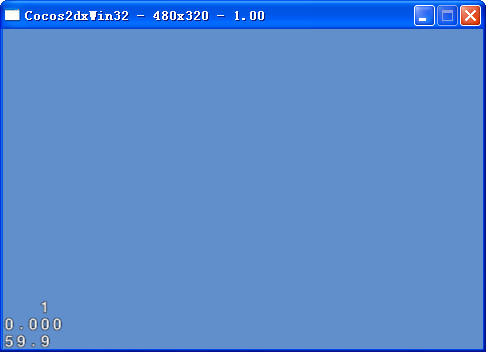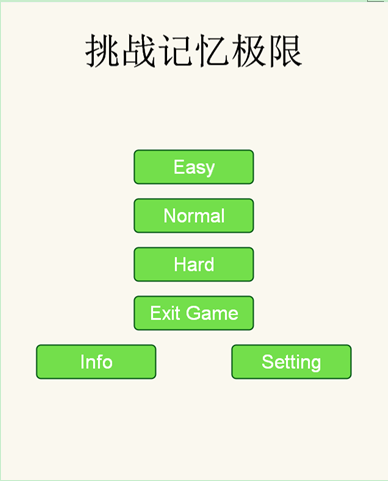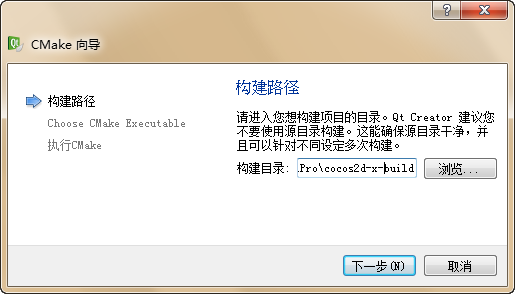1.retain 和 release
Cocos2dx有一套内存管理机制。retain表示保持引用,以免被释放。一旦对象调用autorelease函数,这个对象就被cocos的内存管理机制盯上了,一旦他没有被认领,那他就会被释放。如下,他就会被内存机制自动释放:
// add "HelloWorld" splash screen"
sp = Sprite::create("HelloWorld.png");
// position the sprite on the center of the screen
sp->setPosition(Vec2(visibleSize.width/2 + origin.x,visibleSize.height/2 + origin.y));
// add the sprite as a child to this layer
//this->addChild(sprite,0);这样会导致在这个init函数执行完时,自动释放了sp。导致下面的调用出错:
void HelloWorld::menuCloseCallback(Ref* pSender)
{
#if (CC_TARGET_PLATFORM == CC_PLATFORM_WP8) || (CC_TARGET_PLATFORM == CC_PLATFORM_WINRT)
MessageBox("You pressed the close button. Windows Store Apps do not implement a close button.","Alert");
return;
#endif
sp->getPosition();
Director::getInstance()->end();
#if (CC_TARGET_PLATFORM == CC_PLATFORM_IOS)
exit(0);
#endif
}
sp->retain();(1)首先,要想让对象参与内存管理机制,必须继承Ref类(Node,Layer)等
(2)其次,调用对象的autorelease函数,对象就会被cocos2dx的内存管理机制盯上。一旦没人认领,就会释放。
(3)如果不想让对象被释放,那么就要调用对象的retain函数,一旦调用,就永远不会被内存管理机制杀掉。所以要调用release函数来进行释放。
(4)addChild();会调用retain函数,所以把对象添加到Layer时,就不需要再次调用retain函数了,当Layer释放时,他也会去调用子对象的release函数。
(5)当你把一个对象作为成员变量时,并且没有把对象addChild到另外一个对象时,就需要调用retain函数。
(6)最后,必须调用了autorelease函数之后,retain函数和release函数才会生效。一般create()函数都会调用autorelease函数。
Sprite* Sprite::create(const std::string & filename)
{
Sprite* sprite = new Sprite();
if(sprite && sprite->initWithFile(filename))
{
sprite->autorelease();//retain release 必须有调用autorelease才会生效
return sprite;
}
....
}
2.数据保存
Cocos2dx提供保存数据的功能,类:UserDefault,他将数据保存到xml文件里,下次我们就直接从xml那里读取。适合简单的数据保存。
常用的api接口:
//set 数据
void setBoolForKey(const char* pKey,bool value); void setIntergerForKey(const char* pKey,int value); void setFloatForKey(const char* pKey,float value); void setDoubleForKey(const char* pKey,double value); void setStringForKey(const char* pKey,const std::string & value);//get数据
bool getBoolForKey(const char* pKey); bool getBoolForKey(const char* pKey,bool defaultValue); int getIntegerForKey(const char* pKey); int getIntegerForKey(const char* pKey,int defaulerVaule); float getFloatForKey(const char* pKey); float getFloatForKey(const char* pKey,float defultValue); ...写个例子验证下:
UserDefault::getInstance()->setStringForKey("name","LLLdreamer");
std::string name = UserDefault::getInstance()->getStringForKey("name","none");
log("name = %s",name.c_str());
3.Csv配置文件读取
(1)首先来编写字符工具类,用于解析字符。
#ifndef _STRINGUTIL_H_
#define _STRINGUTIL_H_
#include "cocos2d.h"
USING_NS_CC;
class StringUtil:public Ref
{
public:
static StringUtil* getInstance();
virtual bool init();
ValueVector split(const char* srcStr,const char* sSep);
private:
static StringUtil* m_StringUtil;
};
#endifcpp文件
#include"StringUtil.h"
StringUtil* StringUtil::m_StringUtil = NULL;
StringUtil* StringUtil::getInstance()//单例
{
if(m_StringUtil == NULL)
{
m_StringUtil = new StringUtil();
if(m_StringUtil && m_StringUtil->init())
{
m_StringUtil->autorelease();
return m_StringUtil;
}
else
{
CC_SAFE_DELETE(m_StringUtil);
m_StringUtil = NULL;
}
}
return m_StringUtil;
}
bool StringUtil::init()
{
return true;
}
ValueVector StringUtil::split(const char* strSrc,const char* sSep)//和java的spit函数类似
{
ValueVector stringList;
int size = strlen(strSrc);
Value str = Value(strSrc);
int startIndex = 0;
int endindex = 0;
endindex = str.asstring().find(sSep);
std::string linestr;
while(endindex > 0)
{
linestr = str.asstring().substr(startIndex,endindex);
stringList.push_back(Value(linestr));
str = Value(str.asstring().substr(endindex+1,size));
endindex = str.asstring().find(sSep);
}
if(str.asstring().compare("") != 0)
{
stringList.push_back(Value(str.asstring()));
}
return stringList;
}测试用例,可以正常的输出了:
auto strList = StringUtil::getInstance()->split("bingzong,dizong,tangzong,hongzong",",");
for(auto value:strList)
{
log("value = %s",value.asstring().c_str());
}(2)csv文件对象类
我们把csv文件当做一个对象来处理,新建一个CsvData对象,代表一份Csv文件数据。
#ifndef _CSVDATA_H_
#define _CSVDATA_H_
#include "cocos2d.h"
USING_NS_CC;
class CsvData:public Ref
{
public:
CREATE_FUNC(CsvData);
virtual bool init();
void addLineData(ValueVector lineData);//添加一行数据
ValueVector getStringLineData(int iLine);//获取某行数据
Size getRowColNum();//获取行列数据
private:
ValueVector m_allLinesVec;
int m_iColNum;
};
#endif
#include"CsvData.h"
void CsvData::addLineData(ValueVector lineData)
{
m_allLinesVec.push_back(Value(lineData));
m_iColNum = m_allLinesVec.size();
}
ValueVector CsvData::getStringLineData(int iLine)
{
return m_allLinesVec.at(iLine).asValueVector();
}
Size CsvData::getRowColNum()
{
Size size = Size();
size.width = m_allLinesVec.size();
if(size.width > 0)
{
size.height = m_allLinesVec.at(0).asValueVector().size();
}
return size;
}
bool CsvData::init()
{
return true;
}(3)csv文件读取的工具类
#ifndef _CSVUTIL_H_
#define _CSVUTIL_H_
#include "cocos2d.h"
#include "CsvData.h"
#include "StringUtil.h"
USING_NS_CC;
class CsvUtil:public Ref
{
public:
static CsvUtil* getInstance();
virtual bool init();
void loadFile(const char* path);//加载配置文件
Value getValue(int iRow,int iCol,const char* csvFilePath);//获取某行某列的值
const std::string getString(int iRow,const char* csvFilePath);//获取值并转化为字符串
const int getInt(int iRow,const char* csvFilePath);//获取值并转换为整型
const Size getFileRowColNum(const char* csvFilePath);//获取行和列的数量
const int findValueIntWithLine(const char* chValue,int iValueCol,const char* csvFilePath);
const float getFloat(int iRow,const char* csvFilePath);
const bool getBool(int iRow,const char* csvFilePath);
private:
static CsvUtil* m_CsvUtil;
Map<std::string,CsvData*> mCsvMap;
};
#endif
#include "CsvUtil.h"
CsvUtil* CsvUtil::m_CsvUtil = NULL;
CsvUtil* CsvUtil::getInstance()
{
if(m_CsvUtil == NULL)
{
m_CsvUtil = new CsvUtil();
if(m_CsvUtil && m_CsvUtil->init())
{
m_CsvUtil->autorelease();
m_CsvUtil->retain();
}
else
{
CC_SAFE_DELETE(m_CsvUtil);
m_CsvUtil = NULL;
}
}
return m_CsvUtil;
}
bool CsvUtil::init()
{
return true;
}
const std::string CsvUtil::getString(int iRow,const char* csvFilePath)
{
Value colValue = getValue(iRow,iCol,csvFilePath);
return colValue.asstring();
}
const int CsvUtil::getInt(int iRow,csvFilePath);
return colValue.asInt();
}
const float CsvUtil::getFloat(int iRow,csvFilePath);
return colValue.asFloat();
}
const bool CsvUtil::getBool(int iRow,csvFilePath);
return colValue.asBool();
}
void CsvUtil::loadFile(const char* sPath)
{
CsvData* csvdata = CsvData::create();
std::string str = FileUtils::getInstance()->getStringFromFile(sPath);
ValueVector lineList = StringUtil::getInstance()->split(str.c_str(),"\n");
for(auto value:lineList)
{
ValueVector tArr = StringUtil::getInstance()->split(value.asstring().c_str(),");
csvdata->addLineData(tArr);
}
mCsvMap.insert(sPath,csvdata);
}
const Size CsvUtil::getFileRowColNum(const char* csvFilePath)
{
auto csvData = mCsvMap.at(csvFilePath);
if(csvData == nullptr)
{
loadFile(csvFilePath);
csvData = mCsvMap.at(csvFilePath);
}
Size size = csvData->getRowColNum();
return size;
}
Value CsvUtil::getValue(int iRow,const char* csvFilePath)
{
auto csvData = mCsvMap.at(csvFilePath);
if(csvData == nullptr)
{
loadFile(csvFilePath);
csvData = mCsvMap.at(csvFilePath);
}
ValueVector rowVector = csvData->getStringLineData(iRow);
Value colValue = rowVector.at(iCol);
return colValue;
}
例子简单,不在赘述。
const char* sPath = "Monster.csv";//文件必须是存放在resource文件目录下,才能加载成功 CsvUtil::getInstance()->loadFile(sPath); Value firstMonsterName = CsvUtil::getInstance()->getValue(2,1,sPath); Value secondMonsterHP = CsvUtil::getInstance()->getValue(3,3,sPath); log("firstmonstername = %s",firstMonsterName.asstring().c_str()); log("secondMonsterName = %s",secondMonsterHP.asstring().c_str());
4.Json简介
Json也是一种文本文件,一种配置文件,他的格式与csv不一样,类似如下:{
“id”:1,"name":"bingzai","IQ":99.5
}有点类似map容器,一个key对应一个值。
那么如何解析json文件呢,我们直接用JsonCpp的库。可到这里下载:http://sourceforge.net/projects/jsoncpp/
下载解压后,只需要src/lib_json和include/json这两个目录。最后这两个文件的所有文件都都放到Class/Json目录下面。
这样进行编译还会报错,那么尝试在项目上选择属性,配置属性,C/C++,常规,附加包含目录,最前面加上../Classes
#include "json\writer.h"
#include "json\reader.h"
#include "json\value.h"
void HelloWorld::readJson()
{
Json::Reader reader;
Json::Value root;
std::string data = FileUtils::getInstance()->getStringFromFile("test1.json");
if(reader.parse(data,root,false))
{
log("id = %d",root["id"].asInt());
log("name = %s",root["name"].asCString());
log("IQ = %f",root["IQ"].asDouble());
}
}另外,读取嵌套,数组类的JSON,还有写入的,直接参考以下接口:
void HelloWorld::readChildJson()//读取嵌套
{
Json::Reader reader;
Json::Value root;
std::string data = FileUtils::getInstance()->getStringFromFile("test2.json");
if (reader.parse(data,false) == true)
{
log("id=%d",root["id"].asInt());
log("name=%s",root["name"].asCString());
log("IQ=%f",root["IQ"].asDouble());
log("msg value money=%d",root["msg"]["money"].asInt());
log("msg value say=%s",root["msg"]["say"].asCString());
}
}
void HelloWorld::readArrayJson()//数组类的JSON
{
Json::Reader reader;
Json::Value root;
std::string data = FileUtils::getInstance()->getStringFromFile("test3.json");
if (reader.parse(data,false) == true)
{
int iNum = root.size();
for (int i = 0; i < iNum; i++)
{
log("id=%d",root[i]["id"].asInt());
log("model=%s",root[i]["model"].asCString());
log("atk=%d",root[i]["atk"].asInt());
}
}
}
void HelloWorld::writeJson()//写入
{
Json::Value root;
Json::FastWriter writer;
root["name"] = "Who";
root["IQ"] = 999;
std::string json_file = writer.write(root);
FILE* file = fopen("testWirte.json","w");
fprintf(file,json_file.c_str());
fclose(file);
}




